Two words: kick turns. An art. A science. A timeworn skill set. To some frustrating. To others, ballet. Kick turns. It’s what’s on the skin track.
Okay. Corn and hot pow are here and days are ever longer—a joy of spring. So why am I so grumpy? I’ve been doing plenty of trailbreaking, but I kind of like it. It feels like community service and keeps me honest. I’ve been getting up early to ski pow, getting a tan in Alaska, lapping to my heart’s content. What then could I possibly complain about?
You. Yeah, you. Okay, well maybe not you, you, but definitely someone. Stop f&@#ing up the skin track!
Trailbreakers put our heart and soul into packing in that deliberate zig-zag. Many of us planning to come up for more than one lap want to keep those corners clean. The sharp switchbacks were perfectly pitched and angled. But you came along and washed out all that work. You cut corners with steep risers and shuffle through corners making them slick rounded waddles. This need not be. I promise the simple art of the kick turn will save you energy and save gumpkins like me grief.
HOW TO KICK TURN
Step 0. Almost never use steep heel risers. Most modern boots have a great range of motion in walk mode; steep risers make skin tracks terrible, make steps 1 – 6 significantly harder, and use far more effort than just adding in a few more switchbacks….
Step 1. Slide the tip of your downslope ski past the corner of your turn so that your foot is nearly perpendicular to your switchback, shift your weight onto that foot.
Step 2. Turn your body and plant your poles around the corner (where you want to go).
Step 3. Keeping your weight over your downhill ski, lift your uphill ski.
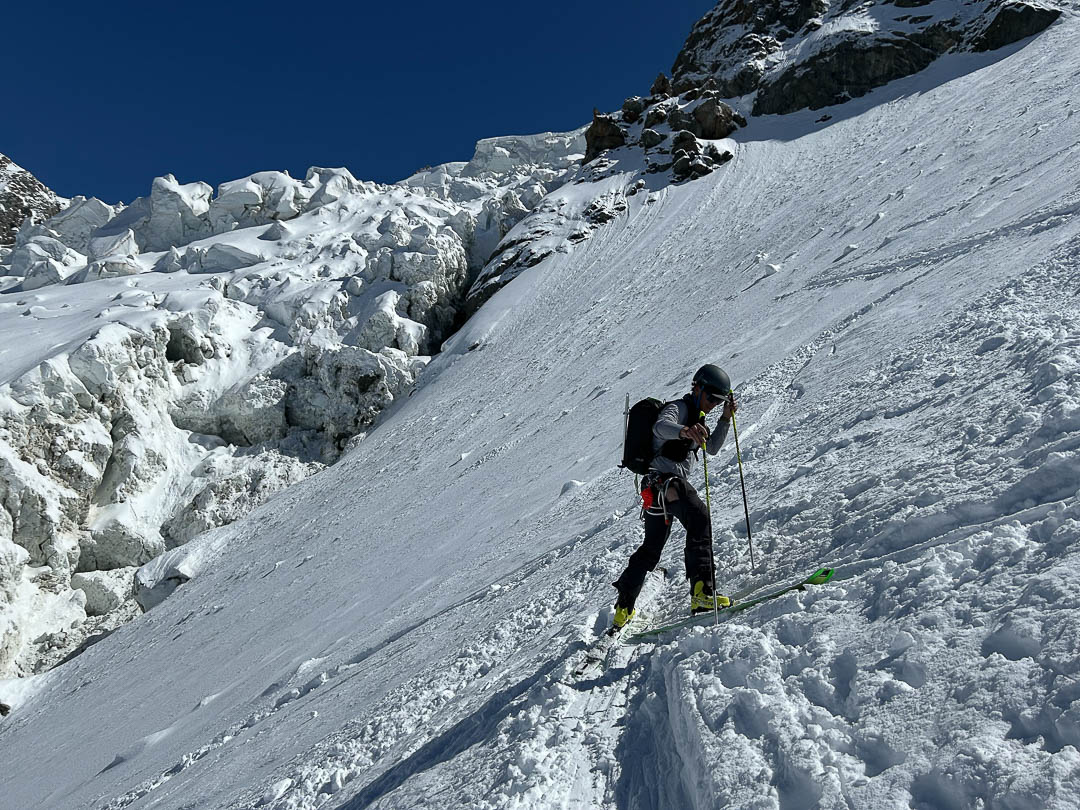
Once the uphill ski is around the corner and set, begin thinking about the downhill ski, and moving it around the corner as well.
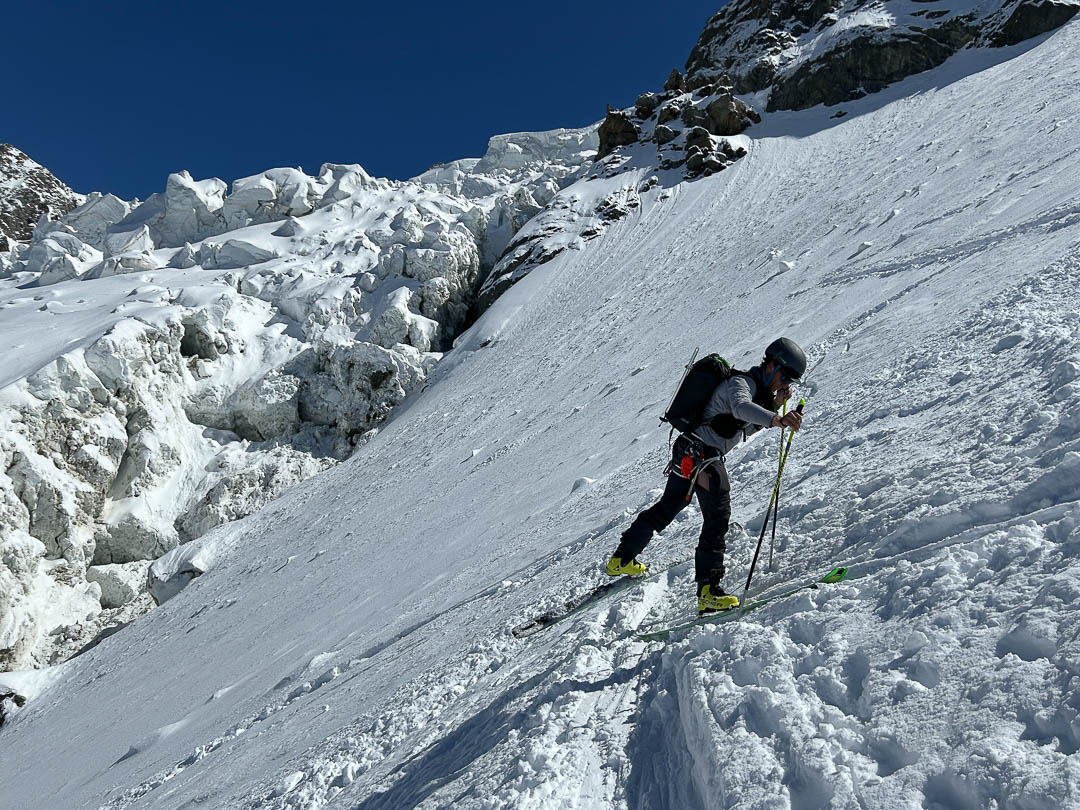
Lift the downhill ski and give a slight kick on the heel to raise the tip and drop the tail. Now, swing the ski tip past the corner.
Step 4. Rotate the uphill ski around to the new direction. This may feel awkward and will require some hip flexibility.
Step 5. Now lift the downhill ski and give a slight kick on the heel to raise the tip and drop the tail—swing the ski tip past the corner.
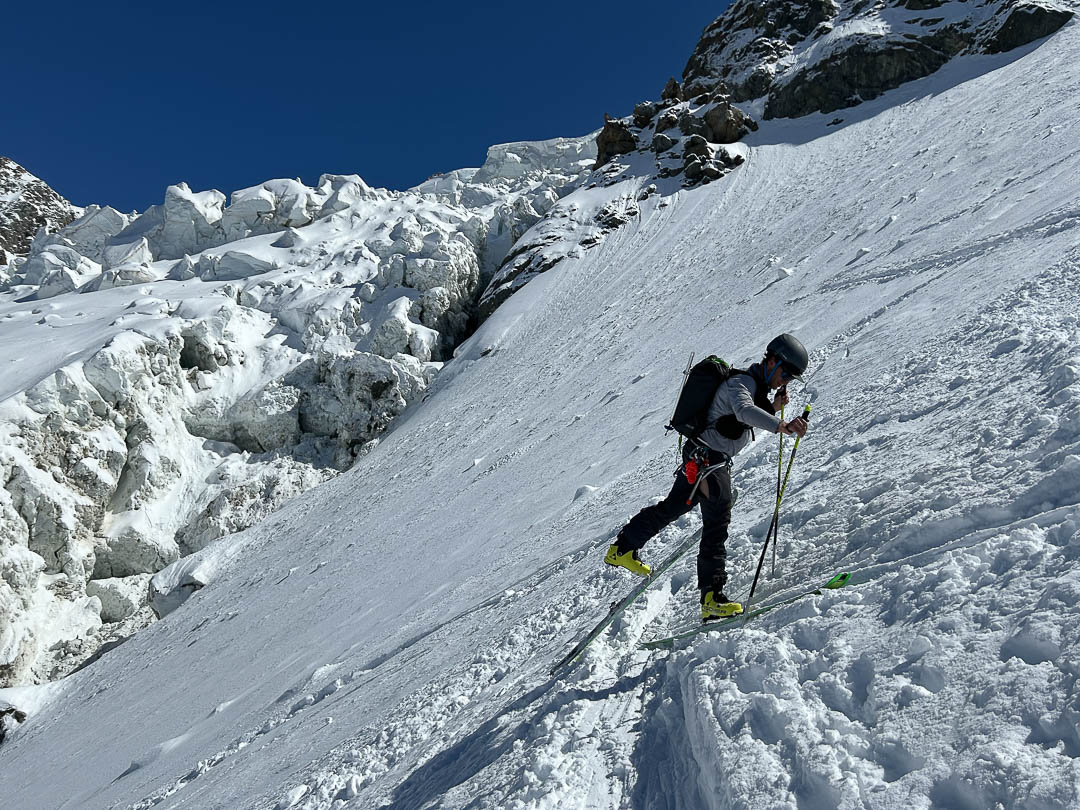
Once the heel is bounced against the ski, the tip should raise slightly making it easier to clear any snow in the corner.
Step 6. Get rad all day without slipping on every turn that your trailbreaker meticulously put in for you. And make fun of CO skiers who round out switchbacks and UT skiers who forego them completely.
This all looks like a bit of acrobatic trickery before you are accustomed to it (they’re also harder on flat ground so make sure there’s actually a slope if you’re practicing), but it works like a charm with big and small skis. Don’t lift your leg too much on the kick, and don’t try to turn with too much elevation gain. Kick turns are significantly harder on canted hardpack left behind by too many others shuffle-stepping around corners, so try and use the ramp and angle already there. A good kick turn is a thing of beauty and utility alike. It will make your life easier, your skin tracks prettier, and you will be more likely to be successful in all your future pursuits.

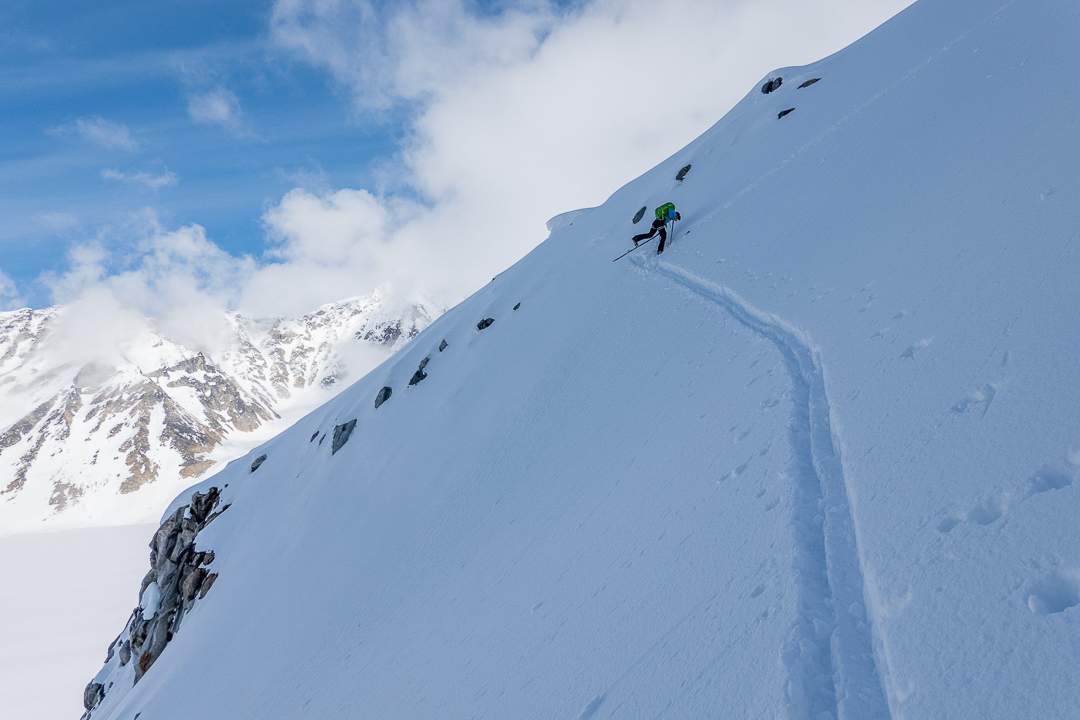
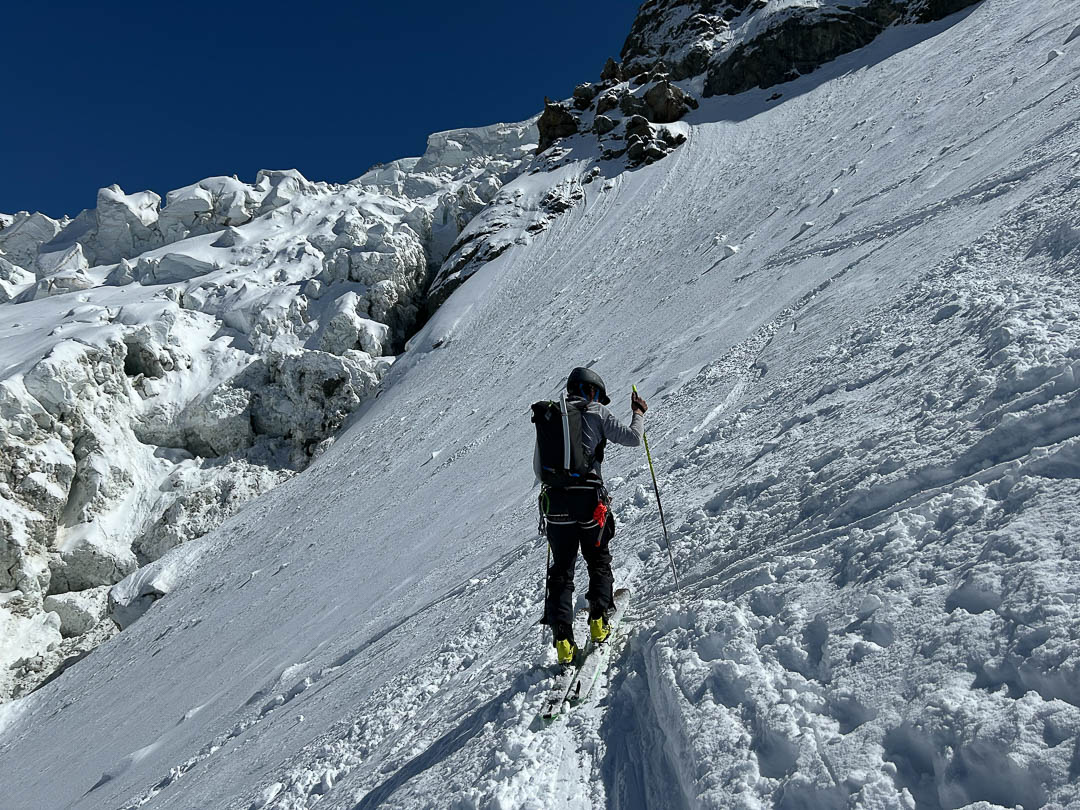
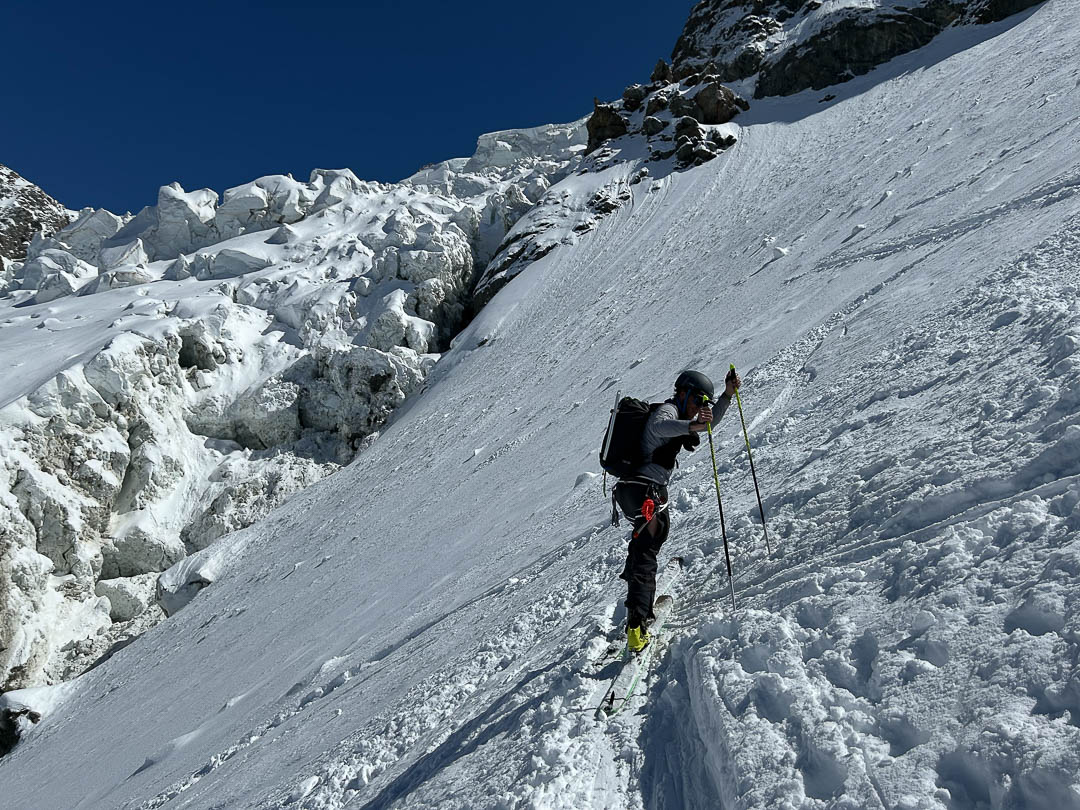
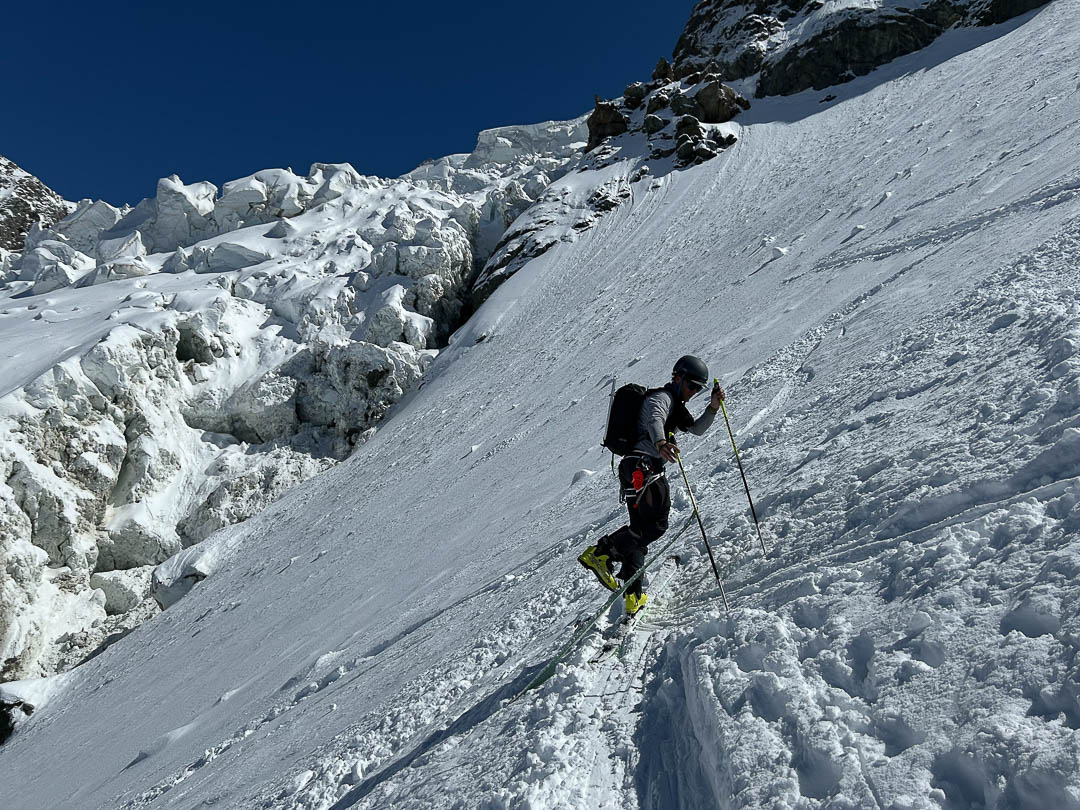
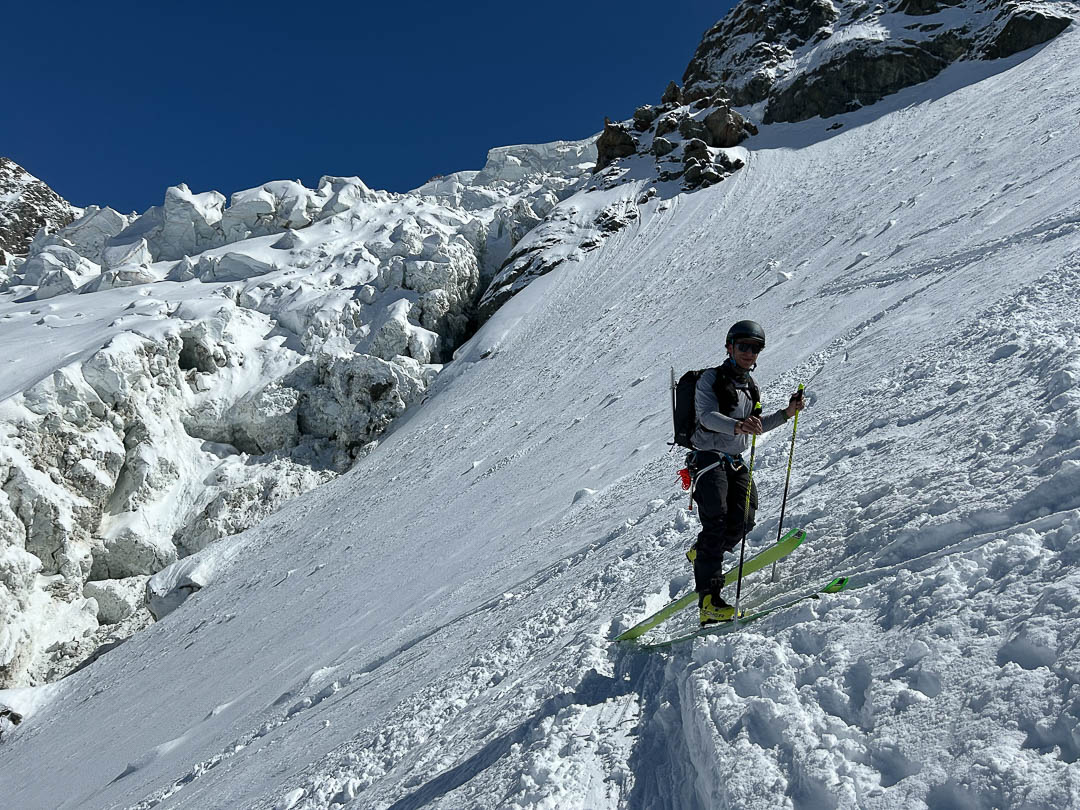
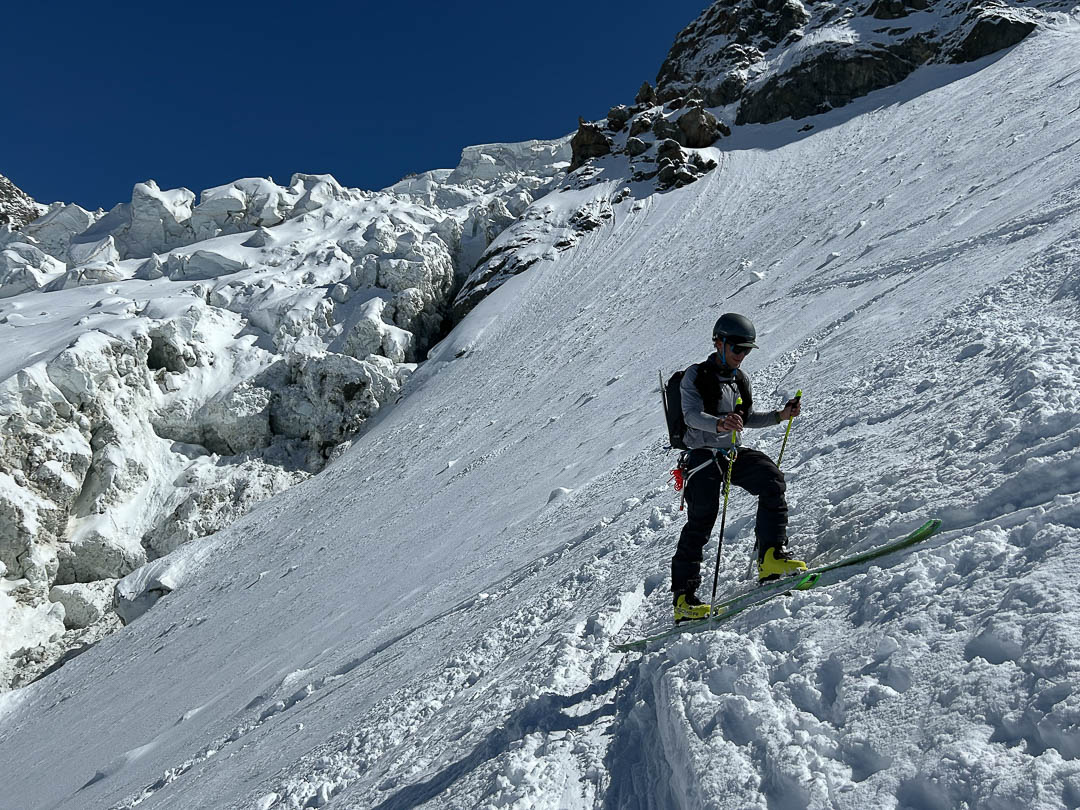
I like to think about flexing my hamstring instead of lifting my knee. I’ve noticed that lots of folks try to lift up the knee on the downhill ski and that creates the difficulty of getting the second ski around. Pulling the heel back and flexing the hamstring is a good cue for me to avoid that!
That’s a solid point/observation Will.
Yes, same here. I had been struggling a bit and really started focusing on doing just that to reduce the number of stuffed tips.